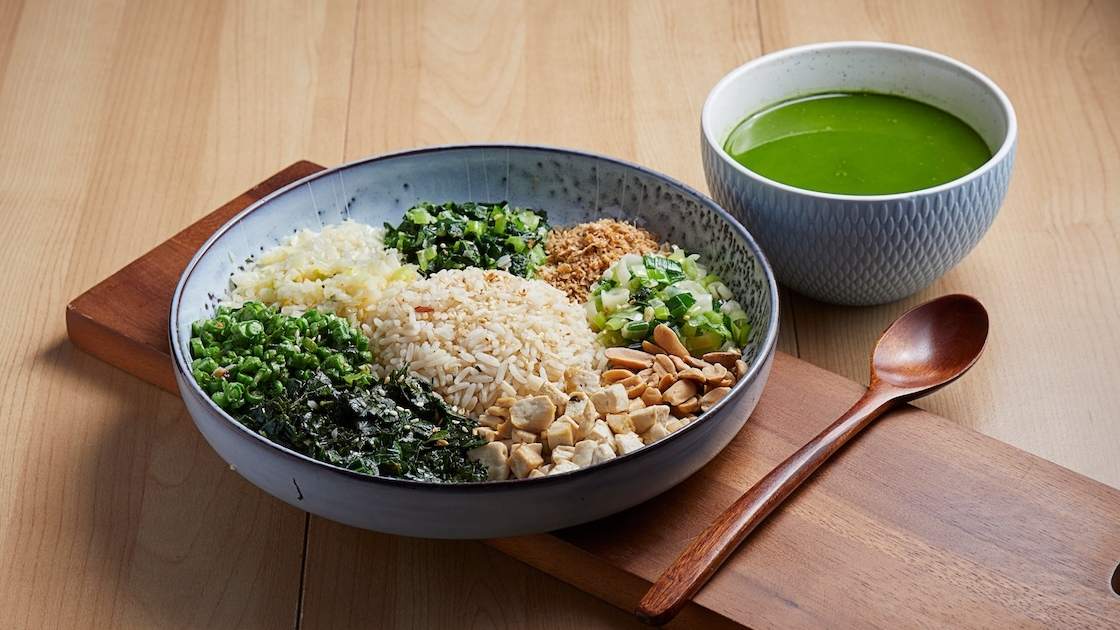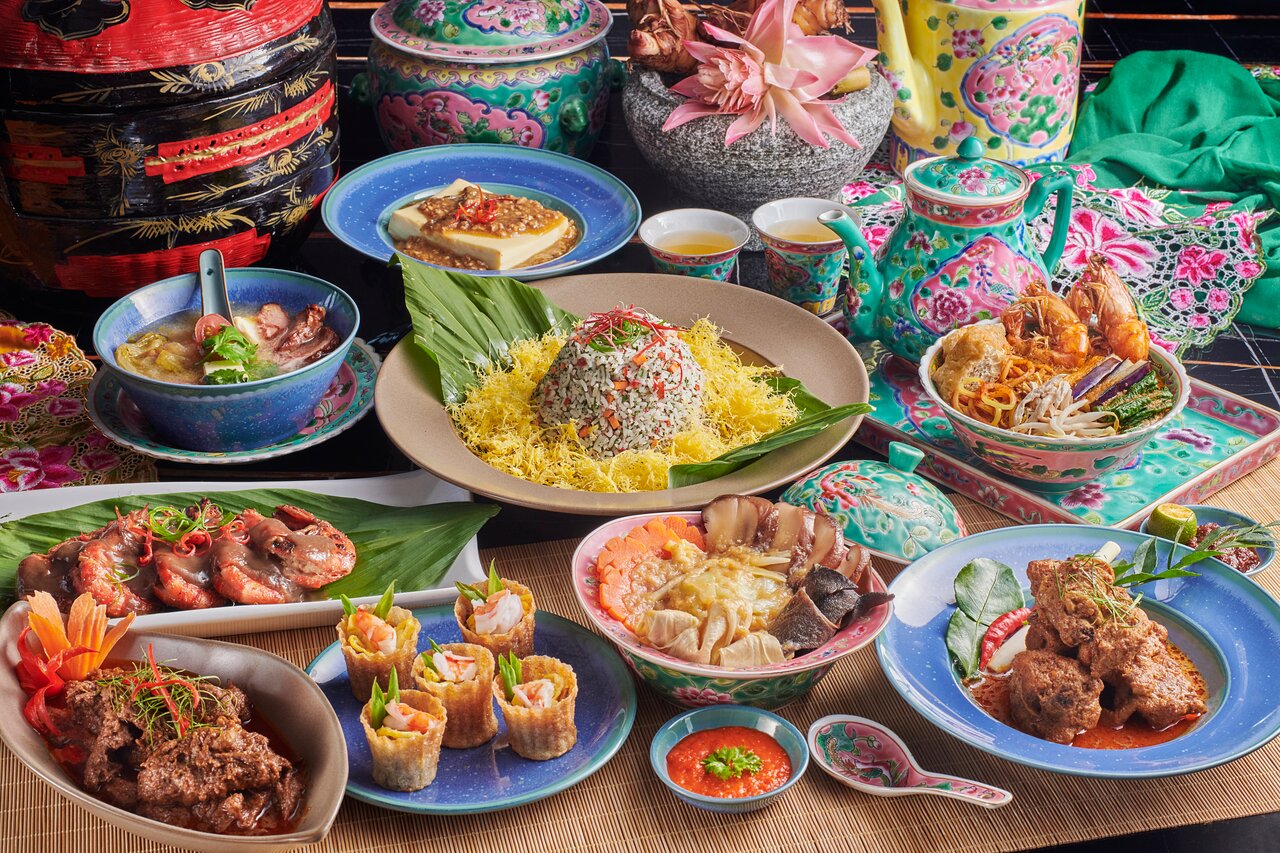Chinese Takeout is a bite-sized, biweekly RADII feature that examines Chinese food from the inside out, by disentangling the (hi)stories behind a single dish or restaurant. Write to us if you have a suggestion or submission.
Beijingers have many time-honored methods of cooling off during the city’s steamy summers — be it the classic Beijing Bikini, frosty bottles of beer and lemon soda, or halved watermelons that parched locals can easily spoon down to the rind on their own in one sitting.
But for a more hunger-quelling, heat-beating treat, Beijingers are hard pressed to find a better summer lunch dish than 芝麻酱凉面 (zhima jiang liang mian), cold flour noodles doused in thick, creamy sesame paste. This dish smothered in China’s take on tahini is not merely beloved; one article on a popular lifestyle WeChat account called it “lifeblood” for Beijingers enduring blistering hot weather.
That article highlighted one humble, long-running Beijing restaurant that specializes in cold sesame noodles, sesame and mutton hotpot, and other sesame-centric fare from China’s Hui Muslim minority. Zhang Ji Shuan Rou (张记涮肉) is hidden on a side street in the city’s Xicheng district, well away from tourist hubs and trendy haunts. Its less than central location, use of attainable Hui ingredients, and lack of trendy trappings all mean that the spot is refreshingly cheap for this increasingly gentrified and glossy city, where slews of street level businesses have already been bricked up.
Related:
 Moving Out: Beijing’s “Rejuvenation” Enters a New PhaseSigns have started appearing in Beijing asking local residents to move out of the city center. Is this a new phase in Beijing’s “Great Rejuvenation”?Article Mar 04, 2019
Moving Out: Beijing’s “Rejuvenation” Enters a New PhaseSigns have started appearing in Beijing asking local residents to move out of the city center. Is this a new phase in Beijing’s “Great Rejuvenation”?Article Mar 04, 2019
The Place
Like many of these eateries that vend such delights, Zhang Ji Shuan Rou is nondescript down to its entryway — a dark plaque bearing the restaurant’s name in gold Chinese characters, above glass doors with two generic stone lions standing guard on either side, like countless other storefronts across town.

Outside Zhang Ji Shuan Rou (张记涮肉)
Despite the lack of signage or gimmicks, a takeaway window indicates the restaurant’s popularity; on our visit, a long line of hungry local patrons were waiting under the shade of the take-out window’s parasol, braving the scalding 40 degree Beijing July heat.
The muggy wait is worth it for those ordering up tempting takeaway snacks like firmly filling, sesame seed-sprinkled fried buns (you zha gao 油炸糕), starchy and fluffy baked pastries, chopped fried chicken and sliced fried beef tendon.
Related:
 Holidays, History, and Dumplings with a Hui Muslim FamilyArticle Apr 22, 2018
Holidays, History, and Dumplings with a Hui Muslim FamilyArticle Apr 22, 2018
Inside, there are a number of other Hui staples that will seem exotic to many foreign patrons, to say the least. But Zhang Ji Shuan Rou’s broad appeal is apparent at a glance — the restaurant is packed with hordes of customers, from young men enjoying a midday beer with their feast of Hui eats, to feeble elders nibbling at bowlfuls of sesame cold noodles to stave off the summer heat.
The History
Not unlike an intertwined mass of hand tossed cold noodles, the origins of Hui minority cuisine in Beijing are tricky to untangle.
Associate professor Meng Man of the School of History and Culture at China’s Central University for Nationalities, said at the first Silk Road International Cultural Expo last fall that three key ingredients in cold sesame noodles — cucumbers, garlic puree, and the beloved creamy sesame paste — each made their way east from that renowned intercontinental trade route. “Without the Silk Road, you can’t eat Beijing cuisine,” said Meng. “Without cultural exchange, there would be no cold noodles today.”
Despite Beijingers’ palpable love for such fare, there’s surprisingly scant information about its legacy and milestones — which seems strange given the throngs that descend upon restaurants like Zhang Ji Shuan Rou for a cool, noodle-y oasis.

Patrons inside the eatery at lunch time
Dru Gladney was similary befuddled by this dearth of information when he first tried to read up on Hui eats. Currently a professor of anthropology at Pomona College in Claremont, California, Gladney is often cited by publications such as The New York Times as an expert on the Hui minority. As a Chinese language student in Beijing in the ’80s, he grew fascinated by how his new Hui minority friends abstained from pork, arguably China’s most popular meat.
He calls their restaurants crucial hubs where Hui people can safely dine without worrying about violating halal. That, in turn, made those eateries prime spots for meeting and socializing. “These restaurants are critical to keeping their traditions alive,” he says, adding that patrons could meet, eat and pass down their practices at these eateries. He adds that these dietary distinctions have since made Hui cuisine an exotic curiosity among the Han majority, who now crowd restaurants like Zhang Ji Shuan Rou as much as Hui diners.
Related:
 Chinese Takeout: A Vegetarian Oasis in Meaty Gansu ProvinceQinglian (Green Lotus) strives to be an oasis of vegetarian cuisine in Dunhuang’s desert, where meat-heavy menus pervadeArticle Apr 11, 2019
Chinese Takeout: A Vegetarian Oasis in Meaty Gansu ProvinceQinglian (Green Lotus) strives to be an oasis of vegetarian cuisine in Dunhuang’s desert, where meat-heavy menus pervadeArticle Apr 11, 2019
The Food
Haughty foreigners might at first dismiss a spot like Zhang Ji Shuan Rou as dingy, hectic and replete with innards-addled dishes that are all but unpalatable. But even these patrons will quickly change their tune after trying the cold sesame noodles.
These stringy, bouncy handmade flour noodles strike the right balance between being light and filling. Needle thin shredded carrots and cucumbers add to the heat-beating proceedings, because they are so fresh and hydrating. A generous handful of crushed peanuts anchors the dish with a contrasting texture.
Those toppings sit atop the bed of noodles, all but obscuring the thick layer of sesame paste, at least at first.
On our visit, an elder local gentleman, sitting across from us at one of the jam-packed tables, made eager eye contact as we sat down. He then gestured at his bowl and began thoroughly mixing the ingredients together, demonstrating how to ensure every morsel was gloriously soaked in the gleaming sesame paste.

Cold sesame paste noodles (芝麻酱凉面)
That paste gave the other simple, what would’ve been bland ingredients a satisfyingly gentle bitterness. For the uninitiated wondering about the paste’s texture: think peanut butter, but less thick and creamy. The bowlful’s sprinkling of nuts, meanwhile, provided a welcome crunch. Each table’s jars of chili sauce and vinegar seemed popular with many patrons craving more flavor.
However, the straightforward yet quality ingredients in this bowlful do the trick in their own right without being buried in stronger sauces or condiments. And the 12RMB (1.70USD) per bowl price tag is all but unfathomable in the swaths of Beijing eateries frequented by most fashionable foodies, making Zhang Ji Shuan Rou refreshing in every sense of the word.
Related:
 Chinese Takeout: Inside Beijing’s “Queen Bee” Government CanteenBeijing’s “queen bee” provincial canteen has the name-brand recognition of its cuisine to thankArticle May 23, 2019
Chinese Takeout: Inside Beijing’s “Queen Bee” Government CanteenBeijing’s “queen bee” provincial canteen has the name-brand recognition of its cuisine to thankArticle May 23, 2019














